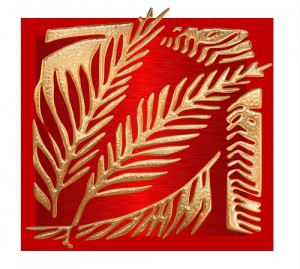Luke 22:14-23:56
This text is used for the Lectionary Year C on March 20, 2016.

In the Gospel of Luke, Jesus used tables to announce the Kingdom of God. Table fellowship, which was an important act of hospitality for all people in the Mediterranean world, was absolutely essential for Jesus’ ministry and an indicator of how he understood the nature of God’s Kingdom. Jesus spends a great deal of time in this gospel teaching his disciples of table manners in the Kingdom. Don’t take the seats of honor. Don’t invite only those who can reciprocate. Over and over again, the table of Jesus is illustrative of the ways of the Kingdom. This Passover table in 22.14-23 – along with the one in Emmaus – should remind the reader of all the tables that have frequented the entire gospel.
It was at the table that Jesus announces Judas’ betrayal. One of Jesus’ own disciples betrayed him. One might expect betrayal from someone on the periphery, but for the betrayer to arise from Jesus’ inner circle intensifies the scandal. The betrayal occurred amidst a larger debate amongst his followers as to who was the greatest. In a gospel saturated with reversal stories, this argument over who is the greatest portrays the disciples as extremely dense. On the other hand, Judas’ betrayal and the disciples’ ignorance are not limited to that particular table or to the first century. To the degree that Jesus’ followers continue to have this argument, we continue to follow in Judas’ footsteps.
Jesus’ fervent prayer in the Garden of Gethsemane highlights the Lucan emphasis on prayer. Prayer was a central focus of Jesus’ life. Of all the gospels, Luke highlights prayer the most. Jesus’ radical social teaching and subversive gospel were rooted in his conversations with God. He made time to be with God and taught his disciples to pray (11.1-13). Jesus actualized the will of God in his life because he first prayed for it. May it be so with all his disciples.
Peter’s severing the ear of the Roman soldier provides a platform for the sermon to address the peacefulness of Jesus’ life and work. The sword had more to do with the way of Rome than the way of Jesus, but old habits die hard. This same sentiment is expressed later in the narrative when the mob prefers the release of a violent insurrectionist to Jesus. The temptation of violence and overt force is pervasive in this narrative and remains so today. Throughout history, people in general and Christians in particular have preferred the way of Peter and Barabbas to the way of Jesus. We have tried to achieve the ends of peace through the means of violence. We have grown so accustomed to the ways of force, that we prefer the release of Barabbas to a man of peace. Peace threatens the status quo more than swords do, because ultimately, violence changes so very little and only begets more violence. The Lucan passion account highlights the stark contrast between the way of Jesus and the way violence.
While Judas, Peter, and the other twelve seem to fall away in Jesus’ hour of need, others enter the narrative for the first time in support of Jesus. Simon of Cyrene helps Jesus carry his cross. Joseph of Arimathea provides a place for Jesus to be buried. There are a group of women who mourn at the cross and prepare spices to anoint Jesus body after burial. Anointing the body of one’s teacher was one of the chief responsibilities of disciples. In each of these ways, Jesus receives surprising support from people who would be cast as extras in the gospel, while the main characters fall away.
The responses of those at the cross are no small matter. The mocking crowd – along with the criminal crucified beside Jesus – offer a threefold temptation reminiscent of the temptation in the wilderness (4.1-13). Both stories reveal the tendency to want a pragmatic faith of glory rather than a virtuous faith of sacrifice. The other criminal’s redemption at the cross is illustrative of Luke’s desire to include all sorts of outsiders into the Kingdom. Finally, Jesus’ promise of “paradise” reminds one of the Garden of Eden and the distinctively Lucan emphasis on Jesus as the “new Adam.”
At the death of Jesus, there seems to be a change in the temperament of the onlookers. The Jewish crowd walks away beating their breasts, a sign of contrition and repentance. The Roman centurion at the cross declares Jesus to be innocent. The shining light of Jesus’ forgiveness evokes repentance from the Jewish crowd, and it prompts the one in charge of crucifixion to declare Jesus innocent. The responses of both Jewish and Gentile observers of the cross pave the way for the reconciliatory work of the early church in Jew-Gentile relations. The cross not only reconciles people to God, but it also reconciles people to one another. In this way, the church is a cruciform community, which is illuminated in the book of Acts.
The passion narrative in Luke demands we rethink how we understand power. From the very beginning of these texts, Passover is the backdrop against which we are to read this narrative. Passover is the remembrance of Yahweh’s grand subversion of power in Egypt. Passover reminds us that true power liberates rather than enslaves. Ultimately, power is not in angry mobs or armed soldiers. Most powerful is the sort of love which is made visible in the cross.
Stories of reversal saturate the entire Gospel of Luke. The passion narrative brings these reversals to a culmination. The premier disciples prove to be fickle at best while unexpected disciples seemingly spring from nowhere. Those who feel as though they are righteous are exposed in their guilt, while the one condemned to be crucified is declared innocent. True power stems, not from those who act in violence, but from those who struggle towards peace. In all of these ways, these reversals pave the way for the great reversal of resurrection in the chapters to come.
 Dr. Preston Clegg
Dr. Preston Clegg
Pastor
Second Baptist Church, Little Rock, Arkansas
pclegg@2bclr.com
Tags: table fellowship, non-violence, prayer, power, crucifixion
